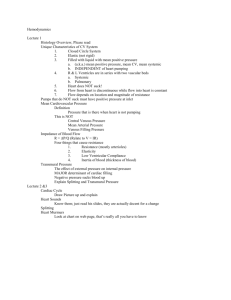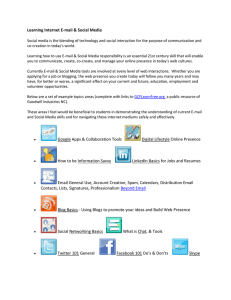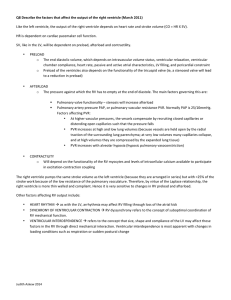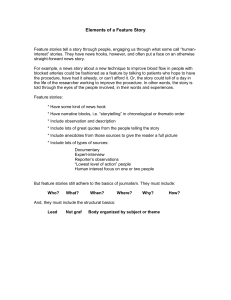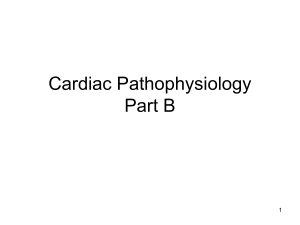Hemodynamics Basics: Cardiac Output, Stroke Volume, and More
advertisement
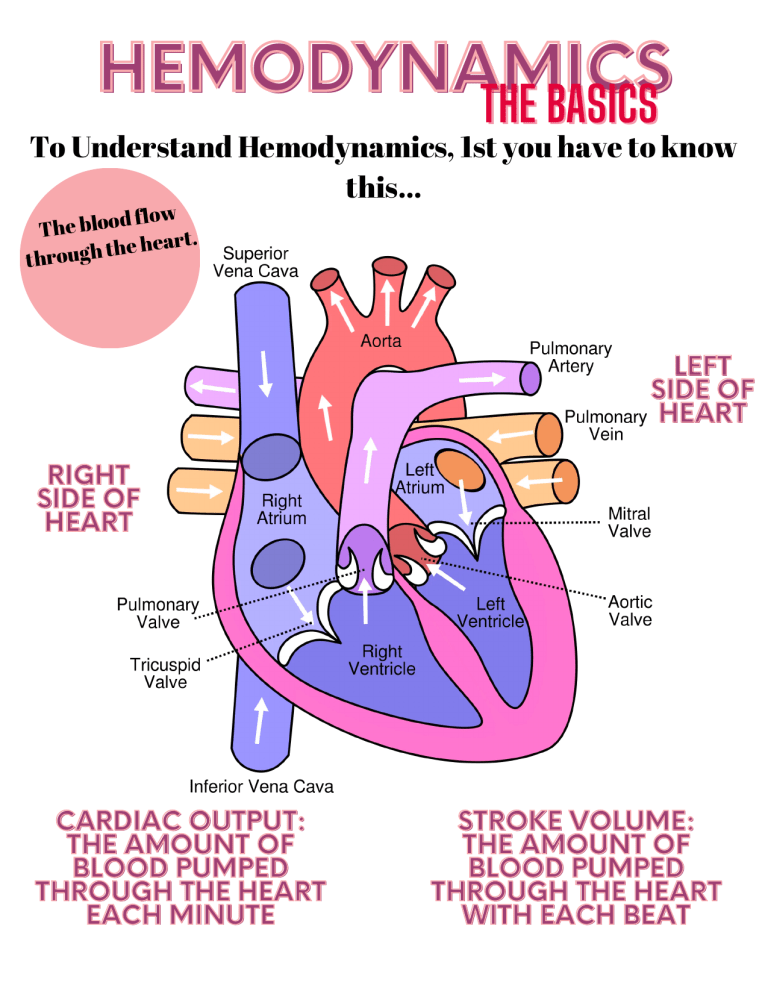
HEMODYNAMICS THE BASICS To Understand Hemodynamics, 1st you have to know this... d flow The bloo eart. h e h t h g throu LEFT SIDE OF HEART RIGHT SIDE OF HEART CARDIAC OUTPUT: THE AMOUNT OF BLOOD PUMPED THROUGH THE HEART EACH MINUTE STROKE VOLUME: THE AMOUNT OF BLOOD PUMPED THROUGH THE HEART WITH EACH BEAT HEMODYNAMICS THE BASICS THE BASICS CO R H X V S CO= HR SV preload afterload Preload: The amount of volume stretching the ventricle at the end of diastole (filling) Aterload: The resistanct the LEFT ventricle must overcome during systole (pumping) contractility Contractility: The force of the heart to pump blood out to the body. Think of blowing up a balloon and then letting it go. So knowing this... we can say that when the heart rate changes, the stroke volume will also to maintain CO. HEMODYNAMICS THE BASICS THE BASICS Afterload is similiar to a balloon being full and tied with a know on the end. the ventricle has to generate enough pressure to overcome that resistance The greater the stretch, the further the balloon will fly. This is comparable to contractility. HEMODYNAMICS THE BASICS RIGHT Preload Increased by: 1. too much fluid, volume overload. K 2. blood THINM E V O LU transfusions 3. aggressive fluid resuscitation Decreased by: 1. dehydration 2. diuretics 3. blood loss THINK VOLUME LEFT Afterload TH P R E S IN K SURE Increased by: 1. atherosclerosis 2. valvular stenosis 3. systemic hypertension 4. pulmonary hypertension Decreased by: 1. vasodilators 2. blood pressure medications THINK PRESSURE

